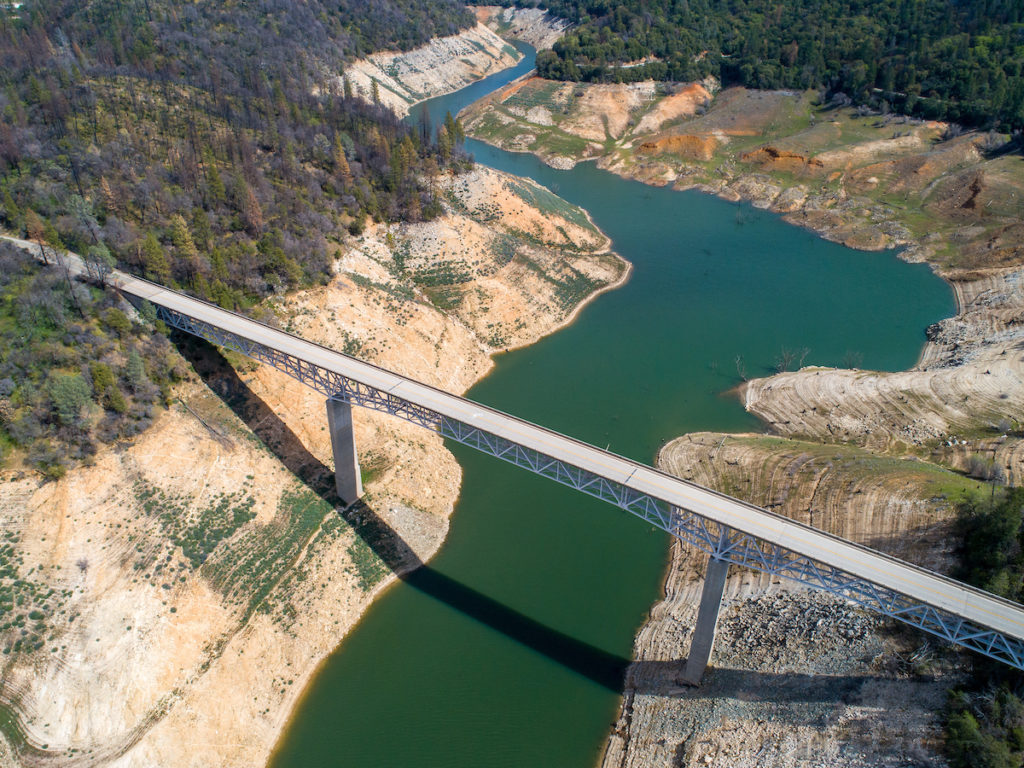
Mar 24, 2022State deepens water supply cuts as drought continues
The California Department of Water Resources (DWR) is cutting its water allocation for the State Water Project to 5% – down from its earlier promised allotment of 15%.
The agency cited dropping reservoir levels and reduced snowpack amid California’s continuing drought.
The March 18 announcement marked another setback for farmers and others who rely on state surface-water supplies.
“Farmers and ranchers are the most resilient group of people I know, but this third year of Mother Nature’s drought coupled with the state-imposed regulatory drought is cutting to the bone,” said Danny Merkley, California Farm Bureau director of water resources. “State regulators need to find a balance to their decisions for all beneficial uses of water: the environment, human health and healthful, locally grown food and farm products.”
DWR Director Karla Nemeth said the allocation was reduced due to the historically dry January and February, and because no significant storms are forecast for March.
In addition, DWR said it plans to provide any unmet critical health and safety needs for the 29 water agencies that contract to receive State Water Project supplies. Statewide reservoir levels are about 70% of average, and the statewide Sierra snowpack has fallen to 55% of average.
DWR said it will preserve as much storage as possible in Lake Oroville, the State Water Project’s largest reservoir. Water releases from Lake Oroville will be prioritized to maintain delta water quality, protect endangered species and meet senior water-right needs.
The agency’s next assessment of the State Water Project allocation will follow the next snow survey on April 1. A final allocation for the water year is typically announced in May or June.
With hopes of sufficient rainfall fading, the California Water Commission last week approved a proposed work plan to develop long-term strategies for managing a sustained drought in the state.
The work plan includes a proposed set of investments and policies that would better position the state to manage severely constrained water supplies for at least six consecutive years. It also makes recommendations to protect communities, fish and wildlife in long-term dry conditions.
Laura Jensen, California Water Commission assistant executive officer, provided an overview of the work plan, which she said focuses on research, outreach and a white paper, which will offer guidance through the drought crisis.
She said the document will be provided to the California Environmental Protection Agency and Natural Resources Agency. Jensen said staff will engage with representatives from other countries that have experienced drought, including Australia, South Africa and Israel.
In a separate action, the commission increased potential funding amounts for seven water-storage projects ranked through the Water Storage Investment Program, the process for ranking projects and determining eligibility of funding public benefits under Proposition 1, passed by voters in 2014.
This month, with approximately $64 million in available funding remaining, the commission voted to increase the potential funding amount for the Sites Reservoir Project by $25 million. That corrects a funding shortfall from 2018.
In addition, the commission also voted to adjust the eligibility funding amounts of all existing projects to account for inflation at approximately 1.5%.
The U.S. Environmental Protection Agency last week invited the Sites Project Authority to apply for a $2.2 billion low-interest loan through the Water Infrastructure Finance and Innovation Act. That could bring the project, planned for north of Sacramento, significantly closer to construction.
“The significance of this opportunity cannot be overstated,” said Fritz Durst, chairman of the Sites Project Authority. “We thank our federal partners and the Biden administration for supporting Sites Reservoir in such a meaningful way.”
A loan through the WIFIA program could significantly reduce the costs to participants, making it more affordable for cities, farms and resource managers to have increased water access in dry years.
– Christine Souza, California Farm Bureau Federation
Aerial drone view showing low water under the Enterprise Bridge at Lake Oroville, with a water elevation of 743 feet on March 17, 2022 in Butte County, California. Photo: Kelly M. Grow/California Department of Water Resources







